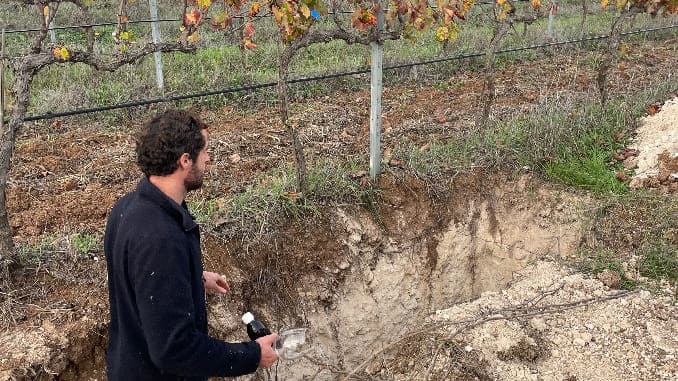Alentejo Wine Region: Progressive, Sustainable, Radical (Yet Rooted in the Past)
Photo by Kathleen Willcox
Portugal is in the worst drought it has faced in more than 1,200 years. This year in Portugal’s Alentejo, considered one of the wine regions most vulnerable to climate due to its baseline hot and dry conditions, grape yields were down by about 5% due to the even drier and hotter-than-usual conditions.
The future doesn’t look much brighter: The ongoing effects of climate change are expected to impact Portugal more severely than other European countries, with potential losses of 2% to its GDP by 2040, according to new findings from the European Commission’s Joint Research Centre. Alentejo in particular, scientists warn, will bear the brunt of the losses, because the agricultural—especially wine-growing—industry is so dependent on regular rainfall and a temperate climate to thrive.
While the outlook is indubitably grim, the mood and spirit in Alentejo is anything but. This is, after all, a region with a history and a wine culture that’s been shaped and defined by challenges.
Invaders—from the Romans in the 3rd century B.C. to the Islamic Umayyad Caliphate in the 8th century—influenced and severely curtailed wine production, respectively. (The Tartessians reportedly introduced wine-growing and making to Alentejo around 2000 B.C.) During the 19th century, Alentejo wine was considered some of the best in the world, earning key accolades at international exhibitions in Paris, Vienna, London and Berlin and landing in the choicest cellars in the world.
But increased political and economic instability in the 20th century plunged Alentejo into an existential crisis. During Antonio de Oliveira Salazar’s dictatorship, he completely isolated the country from the world and instituted complete control of the country’s economy. He introduced a measure called Campanha do Trigo in 1929, which replaced grape estates with cereal farms. He died in 1970, but a subsequent Communist revolution turned remaining estates over to the people.
It wasn’t until the 1980s when previous wine-growers and producers (or their children) returned to Alentejo to rebuild and replant that the region began to reclaim its place on the world stage. And… cue the launch of the climate crisis.
While anyone could be forgiven for throwing in the towel—or at the very least, simply mechanically moving forward—under these circumstances, that’s not Alentejo’s style. In true lemons-to-lemonade fashion, Alentejo is combatting the climate crises with an array of colorful and inspiring weapons, from carbon-eliminating biodiverse farms to teams of pest-munching bat assistants, ensuring not just a tasty today but a viable and more valuable tomorrow.
Wineries in Alentejo Are Tapping the Natural Ecosystem
Wine regions around the world are generally filled with, well, vineyards. In Alentejo, vineyards are simply part of a mosaic of living and growing things—within the region, and frequently, on estates themselves.
At Herdade de Coelheiro, a farm dating back to the 15th century, vineyards aren’t even the first thing you might notice. There are about 1,500 acres of cork forest and about 125 acres of vineyards plus fruit orchards, olive trees and walnut trees.
“We feel like we have created a perfect ecosystem here, a mosaic that works in harmony,” said winemaker Luís Patrão, adding that the cork trees are an essential part of the estate and Alentejo’s future. “They are part of a fragile ecosystem, and they are foundational to preserving biodiversity.”
-

-

-

-

-

-

-

-

-

-

-

-

-

-

-

-

-

-

-

-

-

-

-

-

-

-

-

-

-

-

-

-

-

-

-

-

-

-

-

-








































